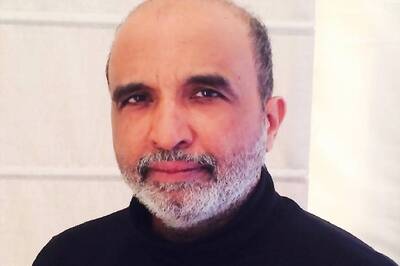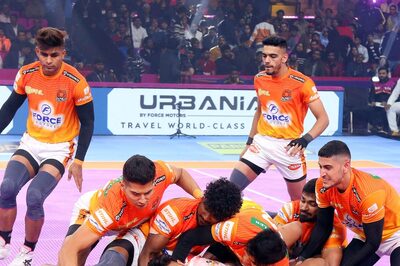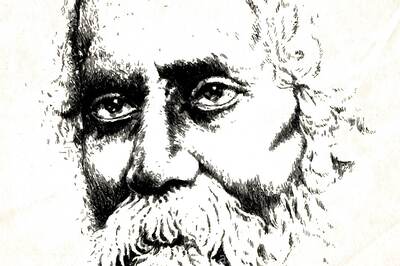
views
“Rupa” is one of my publishers. (I don’t mean the company that makes knitted garments.) Therefore, I read Never Out of Print, The Rupa Story, authored by Rajen Mehra, and naturally published by Rupa, with a great deal of interest.
Daudayal Mehra, Rajen Mehra’s granduncle, established Rupa in Kolkata in 1936. “D. Mehra was an avid Calcutta theatregoer and a fan of Sisir Kumar Bhaduri, known as the father of modern Bengali theatre. One day, D. Mehra was watching a play in which there were two characters named Sona (which means gold) and Rupa (which means silver). He was so taken with this play that he decided to name his company after one of the characters. He opted for the humble Rupa, over her glittering cousin Sona.”
There are several such nuggets in this book. The Prologue states, “It is my greatest regret that I could never persuade my granduncle to write a memoir that would tell the story of the founding of Rupa. In Never Out of Print, I have tried to chronicle the journey of the publishing house that he set up, in addition to the larger story of being a publisher in India.”

Like many other Indian publishers, Rupa started by selling imported books (Collins), before venturing into publishing. The chronicle is partly that of Rupa’s and partly that of Rajen Mehra’s (born in 1947). The book is divided into three parts — the Rupa journey; plain tales of authors and books; and renewal in the new millennium. The bulk of the chapters belong to the first two parts. That first part, the Rupa journey, is intertwined with Rajen Mehra’s journey and therefore, reads like his memoirs too.
I identified much more with this part, partly because it was reminiscent of my growing-up years, partly because it had a lot about the Kolkata I identified with, and partly because this part is written interestingly, with a candour that the last two parts seem to miss. The last two parts are more like boring documentaries.
“Every year we would spend our summer vacation in these UP towns and cities. And every year, it was the same train, the Toofan Mail, which took us to these destinations. This was a train that defied its name when it came to speed — it did not move at the speed of a storm or cyclone but chugged along at sedate pace… On the Toofan Mail, the reservation of your seat depended on how athletic your coolie was and how fast he could run and throw your luggage onto a seat. The Toofan Mail was a truly socialist, inclusive train. It would not differentiate between a big and a small station when it came to halting; it would stop at every station on the route…The Toofan Mail truly was a big-hearted train, as it did not differentiate between the ticketed and the ticketless travellers.”
India’s socio-economic transformation has been rapid and continues to be. The young do not always remember what India was like in the shortage years, in the 1960s and 1970s, what train travel was like, pre-Vande Bharat and bullet trains. Economists and social scientists routinely write books on socio-economic transformation. But sometimes, such non-academic books are much more revealing. Anyone who has travelled on Toofan Mail will identify with the description, apart from it bringing a smile to the lips.
“Fort William, built during the early years of British (sic) in India, was another one of my favourite spots. Even though (sic) the monument had been taken over by the Indian Army, a special permit was required to enter the place. One day, when I was loitering in the maidan outside Fort William, I saw an army officer riding a stallion. Just as the rider was about to pass, summoning up all my courage, I asked whether he could take me in to look around. Smiling, he reined his mount in and pulled me up behind him. To my great astonishment and delight, we then began slowly trotting towards Fort William. Once my short tour was over, as I was dismounting, I asked the great man his name. ‘Sam. They call me Sam Manekshaw, young man.’”
I didn’t know all the details about Rupa venturing into publishing in Bengali, or about the way the Book Fairs started. There are details about the war against piracy.
For those interested in the publishing story, “From 1936 to 1960, Rupa depended on imports from Britain… Rupa’s first published book was Siddhartha by Herman Hesse… Our Bengali publishing wing took off and by the time D. Mehra wrapped it up in the mid-1980s (a lot to do with labour problems), Rupa had published more than 400 Bengali titles. (I had no idea the number was that large.) Now (1990s), after the departure of Penguin, although we found new customers to keep the distribution business thriving, we felt we should ramp up our publishing wing — therein lay the company’s future prosperity.”
There is plenty more. This isn’t merely Rupa’s story. It is a story of India’s evolution too, which is why I enjoyed reading the book so much.
Never Out of Print: The Rupa Story
Rajen Mehra
Rupa, Rs 500
The author is the chairman of the Prime Minister’s Economic Council and a well-known Sanskrit scholar. Views expressed in the above piece are personal and solely that of the author. They do not necessarily reflect News18’s views.




















Comments
0 comment